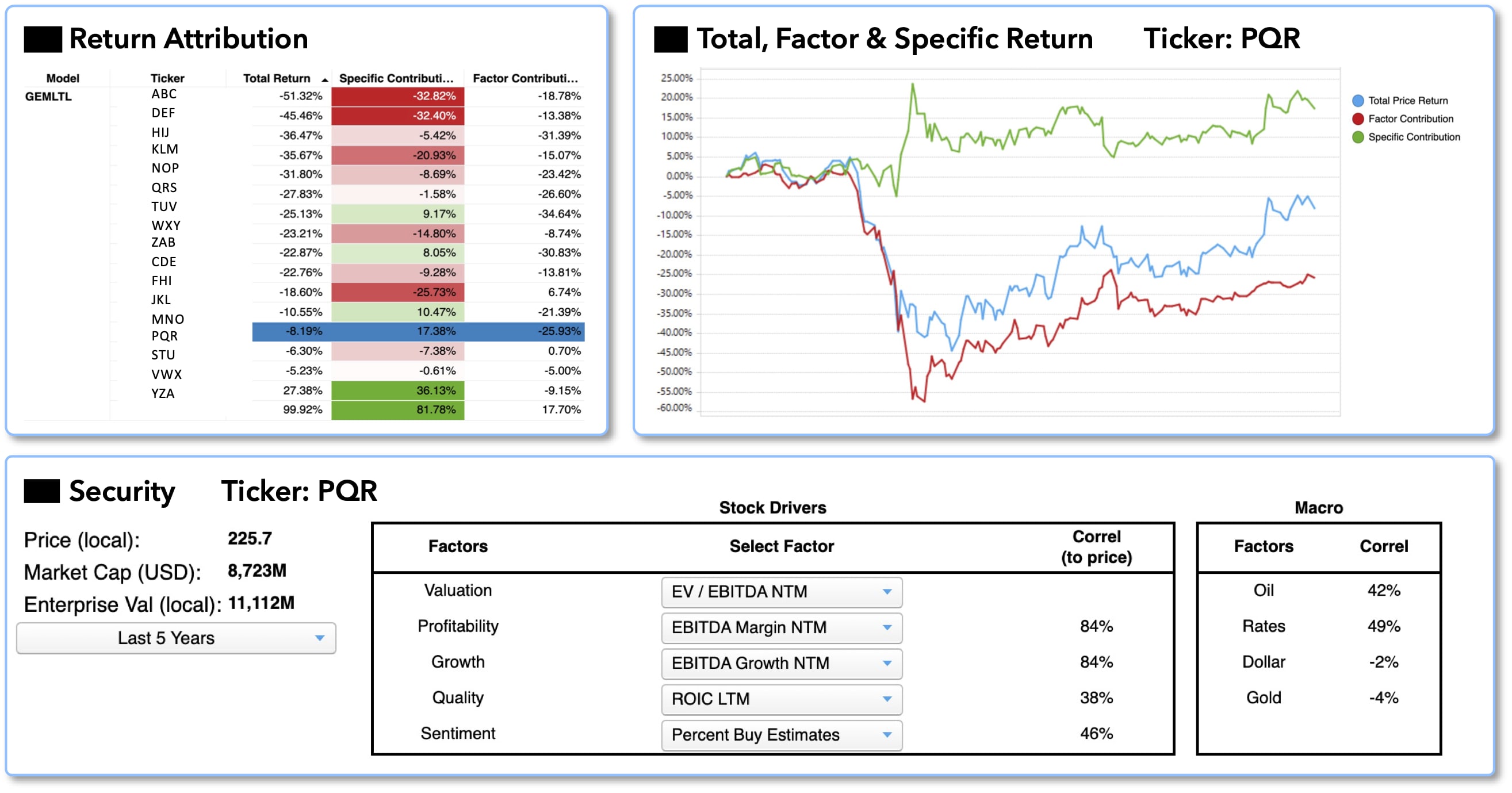Part 6 of 8
What is Driving the Stock?
Here we are going to tackle one of the holy grail interest points across communities – why a stock is trading where it is! We are familiar with valuation factors such as EBITDA, Return on Invested Capital, and how important positive Wall Street “buy” rankings might be. For those unfamiliar with risk model factors from Barra or Axioma, these are basically mathematically calculated relationships to certain thematic styles such as growth, value, leverage, size and others.

One of the easiest ways to understand this is to think of it like nutrition labels. The impact of a food (or asset) really depends on the build of macronutrients. Using factor analysis, we can decompose what is driving asset pricing similar to how we can deconstruct a soup into nutrition macros such as protein, carbohydrates, and fats. In the chart above, “Factor and Fundamental KPI Example,” a company is compared to a group of its peers. While the stock was down 8.19 %in this example, style factors negatively impacted its peer group by 25.93%, and the company actually recovered 17% due to company-specific tailwinds.
Fundamentally, we can see that EBITDA margins and growth have an 84% correlation to stock price, demonstrating explicitly what shareholders care about most, with powerful ramifications for capital allocation decisions. Think of how powerful this is to know when meeting with management or shareholders and this can be explicitly and empirically answered, along with exact correlation of whether the stock has been most influenced by top[-line growth or margin expansion. This adds tremendous granularity when coupled with equity owner investment discipline criteria or management capital allocation planning for M&A, buyback, or dividend policy.
Water, Water Everywhere, Yet…
We have discussed use cases in several components in a decision workflow, but there are many, and everyone weights them differently for different durations.
Read another article in this 8 part series:
- Part 1: Introduction
- Part 2: The Importance of Storytelling
- Part 3: Applying Process in Financial Workflow
- Part 4: Turning Questions into Predictions
- Part 5: ESG: Making Good Intentions Real Through Great Process
- Part 6: What is Driving the Stock?
- Part 7: Blending Inputs, Feedback Loops and Implementing Metrics the Matter
- Part 8: Bringing it Home and Upgrading your Roadmaps

